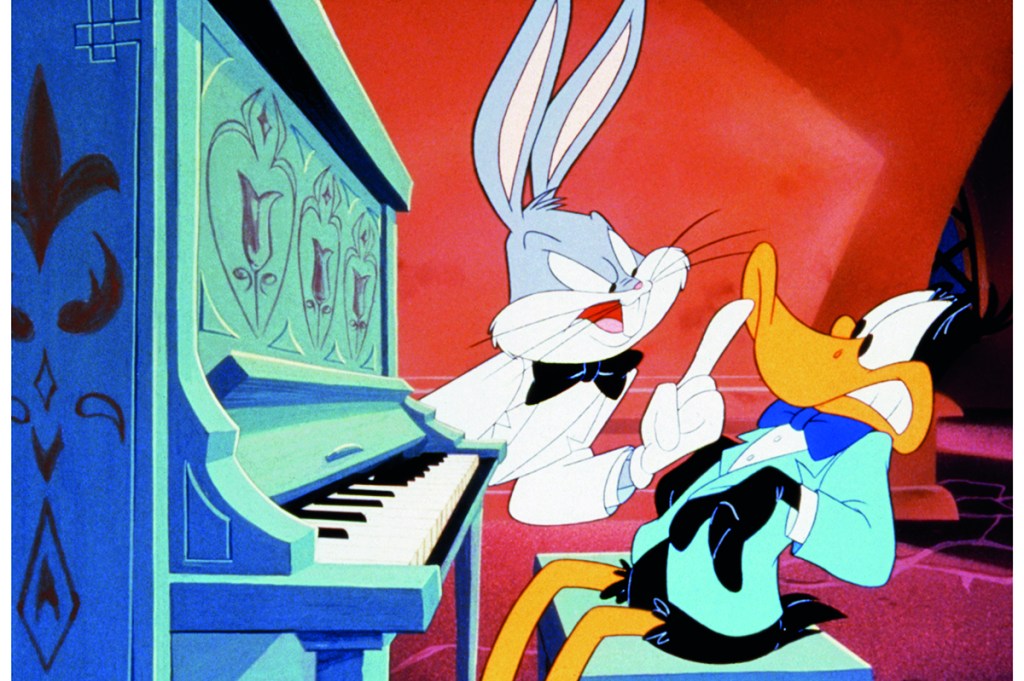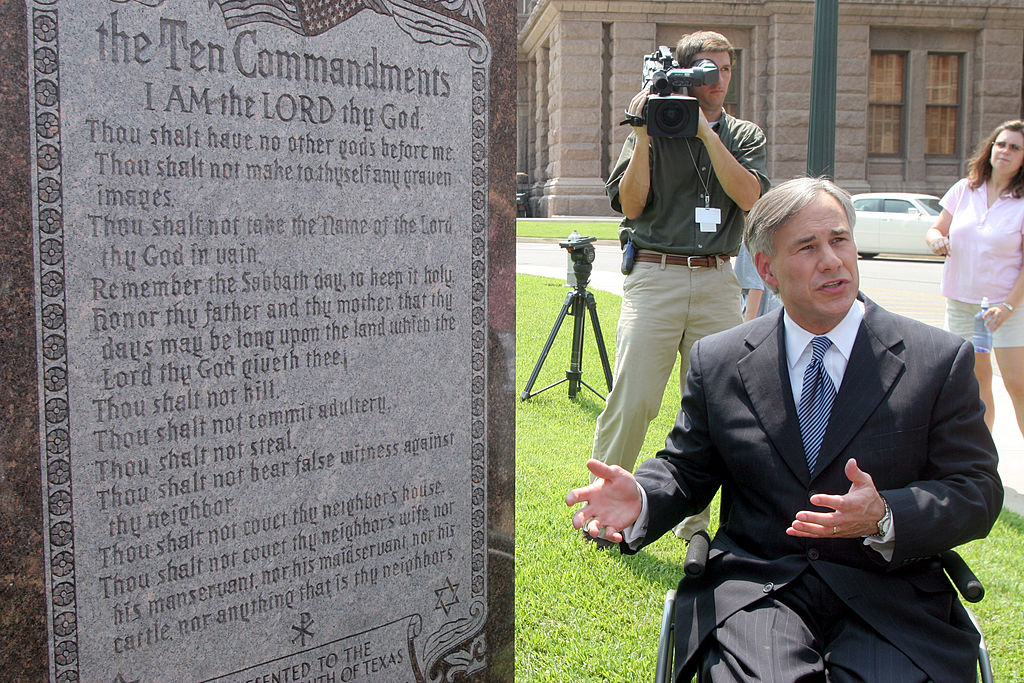In the darkest hour, there emerged a new light. It was 1940 when the double-barreled shotgun of the world first took aim at a little hole called home. At first, it seemed as if the hole’s inhabitant would be taken in by the old carrot trick. At least he would be careful enough not to stick his neck out. With an unblemished, white-gloved, four fingered hand, he feels around his immediate borders and takes the carrot.
Of course, it’s a trap to draw him out. Did he know that all along? He would soon enough. The next time, it’s not a carrot but the hard steel of a gun aiming straight down his burrow. He flicks the barrels with his finger — plink, plink, plink — just to be sure. He tosses back the half-eaten carrot and pats the gun, but it is too late. The instinct to stay out of trouble will no longer do. Something is up.
Just what, precisely, is up was the question on the world’s mind. It was July 27, 1940 when a bunny named Bugs had the audacity — one might say, the insouciant foolhardiness — to go and ask what’s up of the world’s more doctoral minds in ‘A Wild Hare’, his first Merrie Melodies cartoon for Leon Schlesinger Productions, distributed by Warner Brothers Pictures.
There was a lot of rabbit hunting going on that season. Far too much. Despite the aggressor’s warnings to ‘Be vawy, vawy quiet — I’m hunting wabbits,’ the time for silence is over. That ‘scwewy wabbit’ is about to reveal Elmer J. Fudd for the gun-pointing fool he is. A moment later and that shotgun is tied up in a bow. Butts get roundly kicked like the bell striker of a carnival strongman game. The hunter is now the hunted. At his wits’ end, Fudd relents — ‘Wabbits! Guns! Wabbit twaps! Cawwots’ — in abject defeat.
‘Can you imagine anyone acting like that?’ Bugs turns to ask the audience. ‘You know, I think the poor guy’s screwy.’ Channeling the ‘Spirit of ’76’, the rabbit then holds his carrot like a fife. To the tune of ‘The Girl I Left Behind Me’, he marches off stiff-legged back to his rabbit hole.
There are few American creations more endearing or enduring than Bugs Bunny. As voiced in the Noo Yawk accent of Mel Blanc, Bugs embodies a national character that combines street smarts with whimsy, reserve with reluctant but ultimately total engagement. He also emerged on the world stage at just the right moment in history.
Warner Brothers had been distributing short cartoon films since the early 1930s. Its two series, called Looney Tunes and Merrie Melodies, were originally distinguished by their storylines and musical components (the Melodies were meant to promote Warner songs). By the 1940s, the distinctions quickly disappeared as Bugs became the breakout star of both franchises by presenting a new type of American hero. In ‘Super-Rabbit’ from 1943, echoing the finale of ‘A Wild Hare’, Bugs even ends up dressed in a Marine uniform — a ‘real Superman’, he says, with ‘important work to do’ — and heads off to ‘Berlin, Tokyo and points East’. Inspired by the episode, the US Marine Corps inducted Bugs as an honorary private. At the end of the war, he was discharged having achieved the rank of master sergeant.
Bugs appeared in over 150 Warner cartoons during the golden age of American animation. Directed by Tex Avery, Friz Freleng, Robert McKimson and Chuck Jones, among others, and scored for a full orchestra by the musical-quoting Carl W. Stalling, the lavishly produced shorts were eventually eclipsed by cheaper television cartoons in the mid-Sixties.
In May, HBO launched its new Max streaming service with a relaunch of this vast Looney Tunes library. Last month, Warner added to the merrie trove by releasing a three-disc Blu Ray set, The Bugs Bunny 80th Anniversary Collection. Be forewarned: even such seemingly encyclopedic collections come to our censorious age with amendments and redactions. On HBO, with their skipped numbers, the episodes omitted from the 31 seasons of Looney Tunes are easy to spot. They are much harder to track down and see. When combined, copyright extension and political correctness are potent content killers, two of the horsemen of our oncoming techno-apocalypse.
‘All This and Rabbit Stew’, a 1941 Freleng episode, was among the original ‘Censored Eleven’ Warners shorts of 1931-44 that were pulled from syndication in 1968 for their ethnic stereotypes. ‘Hiawatha’s Rabbit Hunt’, a 1941 Freleng episode that was an Academy Award nominee, is also absent from the HBO archive. ‘Bugs Bunny Nips the Nips’ of 1944 and ‘Herr Meets Hare’ of 1945 established Bugs in full wartime mobilization as he outsmarts both Imperial Japan and Nazi Germany. These two historic episodes are nowhere to be seen as well. The latter episode, set in the Black Forest — Bugs gets lost on his way to Las Vegas — sees our hero face off against none other than Hermann Göring and Adolf Hitler. Was this episode pulled because it might upset today’s Axis viewers? In its use of Wagnerian music and imagery — Bugs mesmerizes Göring by riding on a white horse dressed as Brünhilde to the tune of the ‘Pilgrims’ Chorus’ from Tannhäuser — Freleng’s ‘Herr Meets Hare’ serves as the key prelude to Chuck Jones’s ‘What’s Opera, Doc?’ from 1957.
That episode, Jones’s masterpiece, has been called the best cartoon of all time. It was the first cartoon to be deemed ‘culturally, historically, or aesthetically significant’ by the Library of Congress. Here the melodies of Warner Brothers all come together in one Gesamtkunst-cartoon. Elmer Fudd now plays the antagonist as he and Bugs take on quick-changing Wagnerian roles. The music of the ‘Ring’, Tannhäuser, Rienzi and The Flying Dutchman are all woven into the tapestry of the score. For many children, including this former one, their first exposure to the ‘Ride of the Valkyries’ was set to the libretto of ‘Kill the Wabbit!’
Jones’s ‘Rabbit of Seville’ (1950) similarly recasts Rossini with Bugs and Fudd. In ‘Hare Trigger’ (1945), Freleng introduced Yosemite Sam as a new Bugs adversary packing double the firepower of Elmer. Here it was the Old West versus the new East, as Bugs’s cool wit sets Sam’s bluster to boil. Meanwhile, Marvin the Martian, who had been introduced by Jones in ‘Haredevil Hare’ of 1948, became a new Cold War villain for the Space Age, as Bugs sets out to diffuse Marvin’s Earth-shattering ‘Illudium Q-36 Explosive Space Modulator’.
In 1950, for the rabbit’s 10-year anniversary, Warner released a tribute short about Bugs’s life directed by Robert McKimson called, appropriately, ‘What’s Up, Doc?’ The episode purports to tell the story of Bugs’s career on stage and screen as he goes from ballet school to the Broadway chorus. Eventually he is picked up by Elmer Fudd, a big vaudeville star, and the two take their act to Hollywood. Again, you won’t easily find the complete episode online. A brief cameo by Al Jolson saying ‘Mammy’ most likely tanked the full show. But non-offending clippings do readily exist, in particular the final ‘screen test’ with Bugs and Fudd adding words to the opening theme song that well sum up the antics that made Bugs the star he is:
‘What’s up, Doc? What’s cookin’?
What’s up, Doc? Are you’re lookin’
For Bugs Bunny bunting…?
Elmer’s gone a-hunting
Just to get a rabbit skin…
But now the rabbit’s gone again!’
There are many such looney gems in the tunes archive. The best are infused with melodies that are indeed merrie, featuring a rabbit who well knows the score.
This article was originally published in The Spectator’s January 2021 US edition.

























